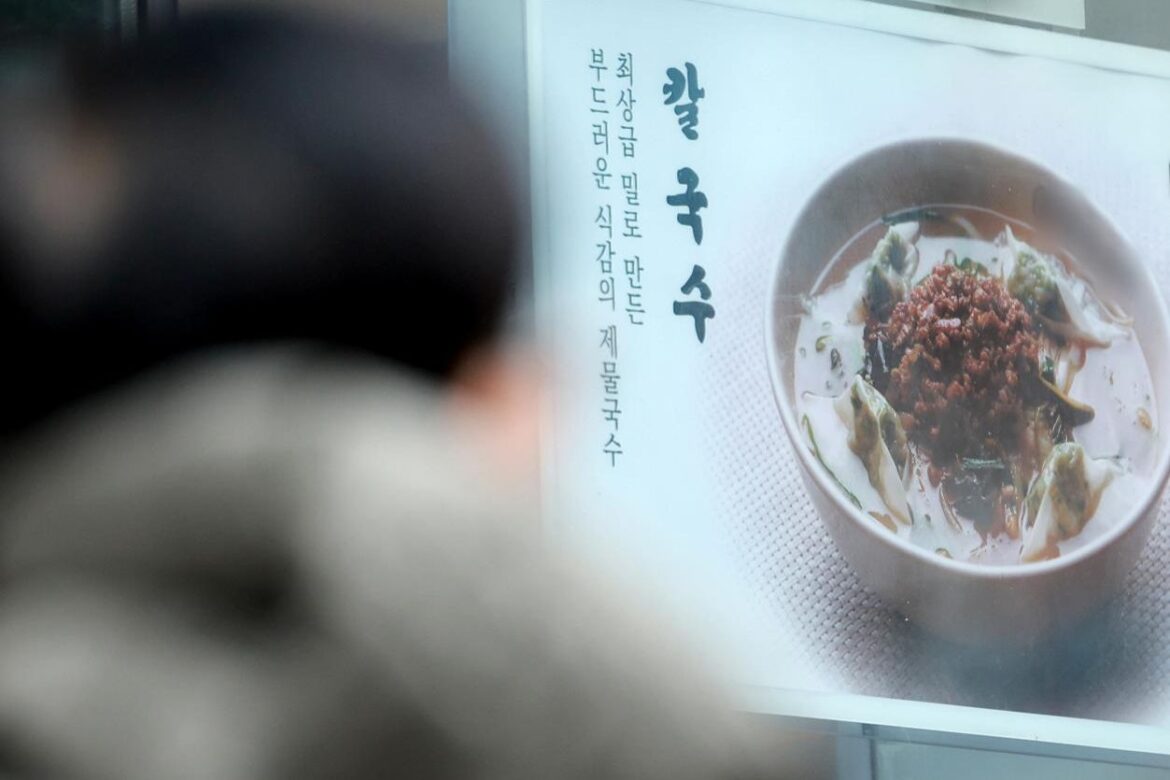Kalguksu, a Korean noodle soup made with knife-cut noodles, recorded the steepest price increase among the popular dining-out menu items last month, data showed Sunday.
Some have taken to characterize this as “noodle-flation,” a portmanteau of noodles and inflation, reflecting how the rising cost of living is hitting consumers through a dish long considered one of the most affordable options.
According to data by the Korea Consumer Agency, as of last month, the average price of eight major restaurant menu items in Seoul rose 3.44 percent from December last year.
Kalguksu showed the largest increase, climbing nearly 5 percent to 9,846 won ($6.7), up from 9,385 won during the same period.
Some popular restaurants charge 11,000 won or more for a bowl.
This is a more than 50 percent jump from October 2015, when the average cost of the dish was 6,545 won.
The price hike is explained by the spike in global wheat costs following Russia’s invasion of Ukraine in February 2022.
Samgyetang, a traditional Korean ginseng chicken soup, recorded the second-largest jump in dining-out prices.
Its average price came to 18,000 won in October, up more than 4 percent from 17,269 won last December.
Other everyday restaurant menu items also became pricier over the same period.
A roll of gimbap, a rice roll made with seasoned rice, vegetables, spam and egg all rolled in seaweed and sliced, rose to 3,646 won in October, up more than 4 percent from 3,500 last December.
The price of a bowl of bibimbap, a mixed rice dish topped with vegetables, egg, meat and gochujang, or Korean chili paste, rose more than 3 percent to over 11,500 won.
“Dishes that once were considered affordable are increasingly becoming pricier, a trend likely to persist given higher ingredient prices and labor costs,” the agency said.


Dining and Cooking